One year ago, state media largely ignored the biggest outbreak of civil unrest in Kazakhstan’s history. The job of informing the public objectively about the widespread protests fell on independent reporters and a few so-called citizen journalists and bloggers who did their jobs at great personal risk. These journalists were attacked by protesters, assailed and tear-gassed by police, shot with rubber bullets, detained, and in some cases arrested, beaten, and imprisoned.
When the air, so recently filled with smoke from grenades and bullets, both rubber and real, cleared, reporters were the ones pressing the government for a full accounting of the 238 people killed, more than 4,500 injured, around 10,000 detained, and several hundred reportedly tortured.
This is the story of the Qandy Qantar — “Bloody January” — uprising through the eyes of those who covered it, beginning in Zhanaozen and ending in Almaty.
You can read this series in English at The Diplomat and in Russian and Kazakh at Orda.kz.
UST-KAMENOGORSK, Kazakhstan: Daryn Nursapar had been part of the Kazakh government’s propaganda machine for 17 years and had risen to chief editor at Altaynews.kz, a state media outlet. But in early January 2022, when the government ordered Daryn and his colleagues not to cover or mention on social media an upcoming protest, something inside of him snapped.
“I felt ashamed that I could not tell our readers what was going on,” Daryn said. “I felt as a journalist I had to cover it.”
Although his bosses at the website warned him not to go, on January 5, Daryn put on his press jacket and went to the central square where police say more than 3,000 protesters were gathering.
“I didn’t think there would be so many people, and I thought wearing the press jacket would protect me,” he said. He posted several photos and videos to his personal Facebook page, where he has nearly 5,000 friends.
“I felt I had the right to post whatever I wanted on my personal Facebook page,” he said.
But even on Facebook, Daryn carefully curated what he shared. His videos showed people holding up a large Kazakhstan flag and someone reading demands into a bullhorn. Other images showed a sea of people standing peacefully as a light snow began to fall.
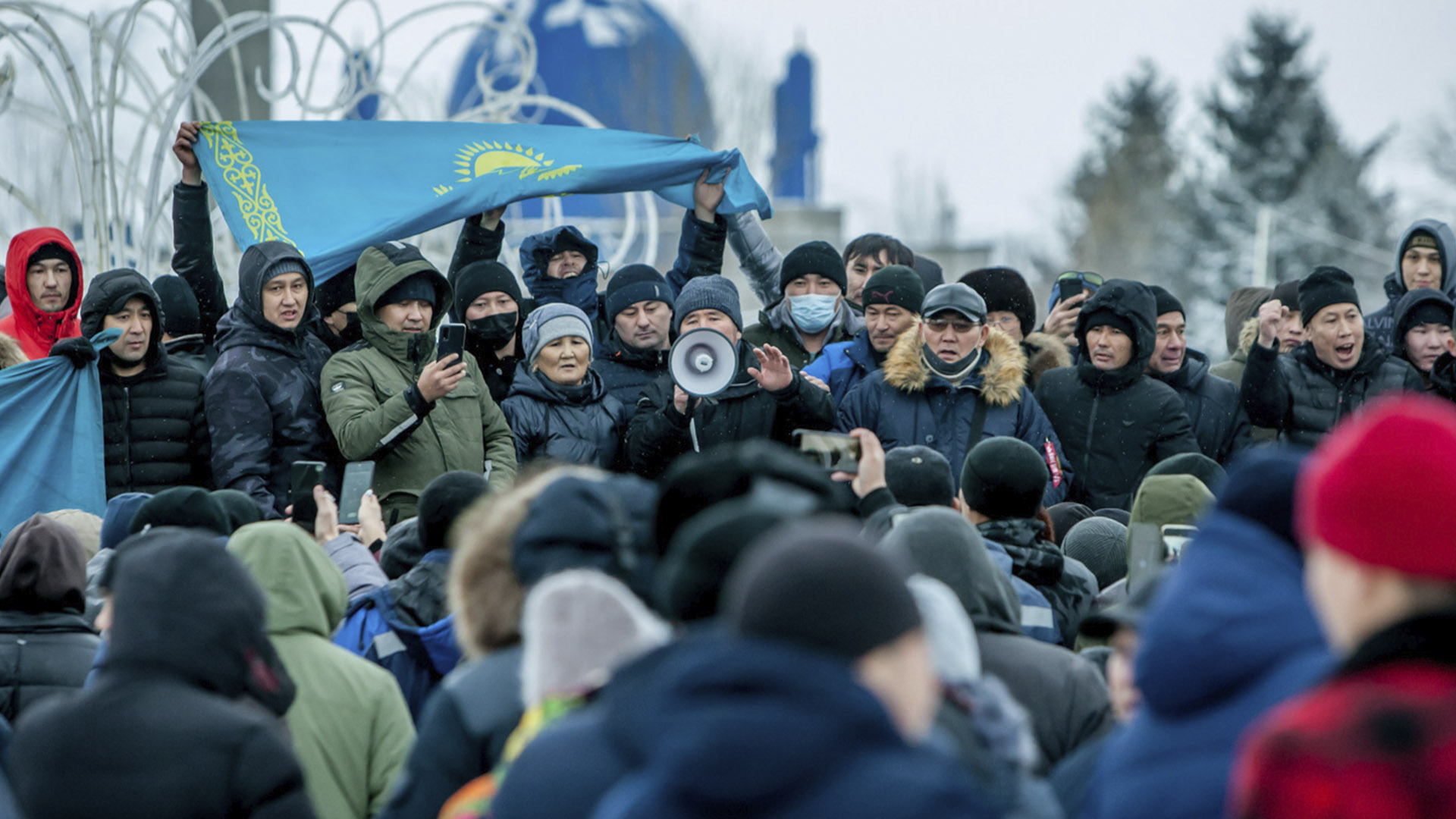
A local activist speaks to the crowd in Ust-Kamenogorsk on January 5, 2022. Photo credit: Vitaliy Ivanov
While the protest in Ust-Kamenogorsk started out peaceful, the images and videos posted by independent blogger Alexandra Osipova, 30, showed how it progressed into what she calls a “massacre.”
“The police began to surround the protesters and then they in turn began to react,” said Alexandra who livestreamed and filmed the protest on her Instagram account, sandra_ouz, which has more than 46,200 followers.
“Police were the first to attack by throwing tear gas at people. Then the protesters took sticks, stones, any means at hand, and attacked the police,” she said. “They used Molotov cocktails. They threw stones at the administration building, smashed windows, cut down trees. Police responded with rubber bullets and more tear gas.”
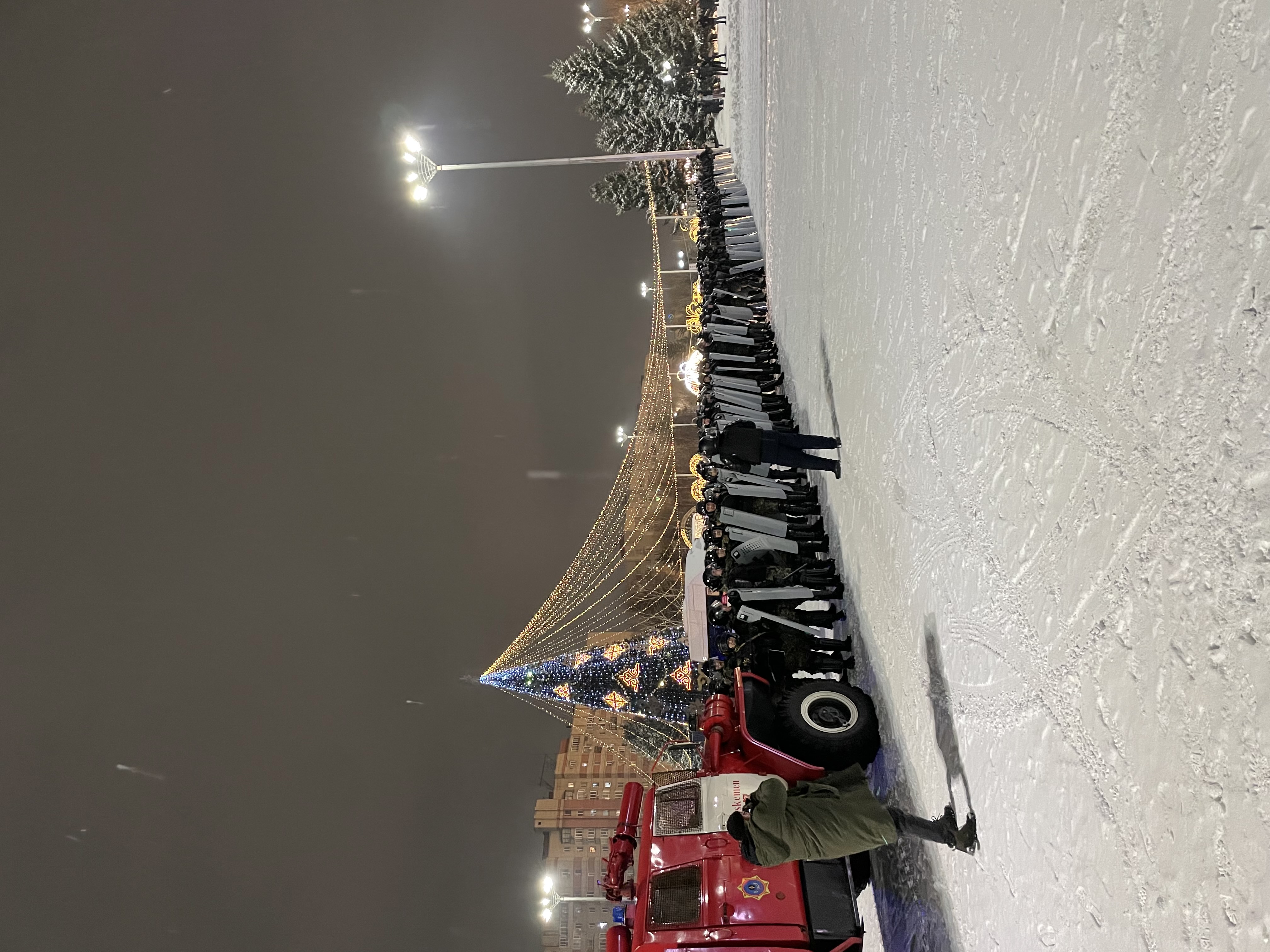
Police gather near the brightly lit holiday tree in Ust-Kamenogorsk. Photo credit: Alexandra Osipova
In her videos, the shooting at first sounds like fireworks amid a festive setting with a big holiday tree decorated in sparkly gold and green lights. Then the rounds become more staccato and constant, and the scene quickly shifts into something more akin to war: The air is full of smoke. People are screaming and running for cover.
Then at about 6 p.m. the internet was abruptly shut off, she said.
Alexandra is not a trained journalist. She normally uses her Instagram account to promote stores and products. But between videos of Alexandra getting makeovers and cosmetic treatments, there are serious video reports of people complaining about government deficiencies.
As one of the few bloggers at the protest, Alexandra recognized that she had a duty to think and act like a journalist even if she couldn’t immediately publish what she gathered. She collected videos from people taken from balconies that showed police punching and kicking people, then dragging them across the icy asphalt. She interviewed witnesses on camera with the hope of posting when the internet came back on.
One man she filmed outside the hospital said he was close to the frontlines. “They fired rubber bullets and stun grenades,” the man said as she filmed with her phone. “Then the tanks went in. Cars started to burn. Then they fired live ammunition. I saw a young guy fall and I picked him up. There was another man with a car, and we dragged the wounded guy into the car. Then they started shooting at our car with live ammunition. They began to open fire on everyone, on all the cars.” The man points to what looks like a large bullet hole in a car door.
Other videos show thousands of people marching down the street into the early morning, shouting in unison defiantly.
Battles between police and protesters lasted until 2 a.m., Alexandra said. Anyone on the square later than that was captured by police.
“They piled them near the Christmas tree in the square,” she said. “There people lay face down in the snow and waited for the police bus to come for them. Out on the street, police forced them to stand facing the wall for a long time. They were also taken to the gym where they were folded face down on the floor.”
Police were stopping and arresting anyone near the protest. Alexandra also fell into their web. After she left the hospital, she was in her car at a traffic light when police, in riot gear and helmets, surrounded her car. A video taken from a nearby building shows police dragging Alexandra from her car and onto the street on her knees.
“Please, don’t kill me. Don’t kill me,” she said she cried.
When they demanded her phone, her journalistic instincts kicked in and she demanded to know under what legal protocol could they seize her phone. Police made a show of waving their guns and cursed at her but released her.
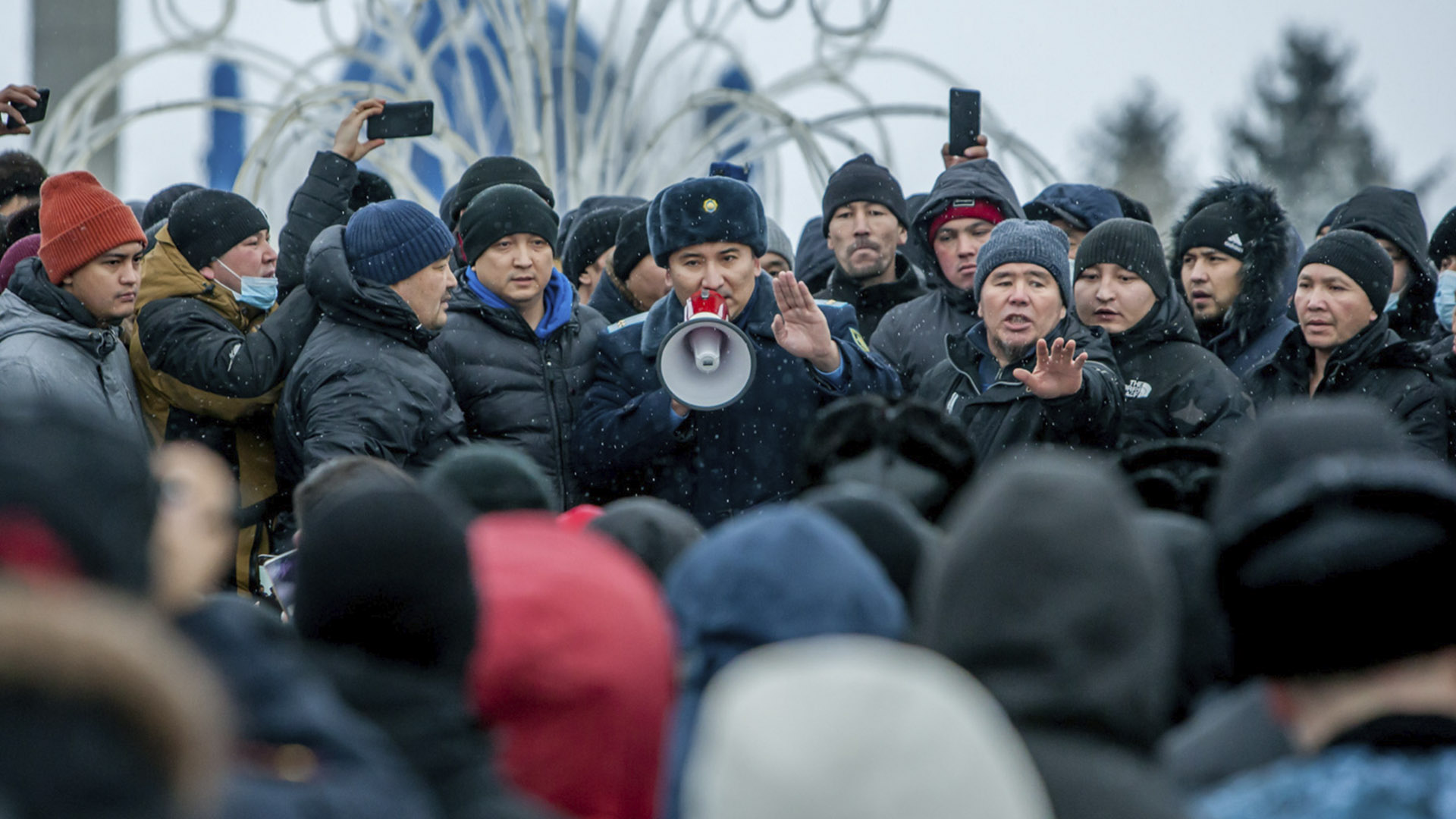
Prosecutor of Ust-Kamenogorsk Yerlan Bulanbaev speaks to the crowd in early January 2022. Photo credit: Vitaliy Ivanov
Kokshetau
Meanwhile, 760 miles away in Kokshetau, in northern Kazakhstan, it was barely 9 a.m. on January 6 and the city square was nearly full. Hundreds of young people, including teenagers from nearby villages, gathered near the bronze statue of Abylai Khan. Watching them were about 200 policemen wearing masks and helmets, and armed with batons.
Baqyt Smagul, 57, the editor of the local independent paper, Bukpa, stood apart from the protesters. He told police he was a journalist. He never wears a press jacket because he says all the police in the city know who he is. That day, he said, they weren’t paying attention to him.
At 10 a.m. police started closing in on the protesters.
“Police were capturing three or four people from the crowd without any reason to do so and started to beat them in front of everyone,” Baqyt said.
Baqyt shouted at people not to fight back, warning that they could face criminal charges.
Police forced people onto waiting police buses. Some managed to run away while others walked peacefully onto the buses. It took at least three buses to haul away those who were caught.
In the chaos, police captured Baqyt, too, and forced him into a police car. He asked them why they were arresting him since he was a journalist. They didn’t reply.
At the police station, officers tried to get him to sign a paper that said he wasn’t working as a journalist. Baqyt refused. After being held all day, he had a hearing. It lasted five minutes. He was sentenced to five days in administrative jail for participating in an unauthorized rally.
The jail cell, which housed six prisoners, was cold. They slept in their clothes and coats. All they had for a toilet was a bucket.
A Knock on the Door
On January 7, Daryn was having dinner with his wife and four kids at their home in Ust-Kamenogorsk when the police arrived.
“When I heard the knock on the door, I knew they had come for me,” Daryn said. But he said his family “was shocked.”
Four officers came into the house. The seized his phone and began looking through his photos. “So, you were there,” one officer said.
They told Daryn he had come to their attention after they recognized his face on protest footage.
Daryn said he was at the protest as a journalist.
“But you were not wearing a press jacket,” one of the officers said.
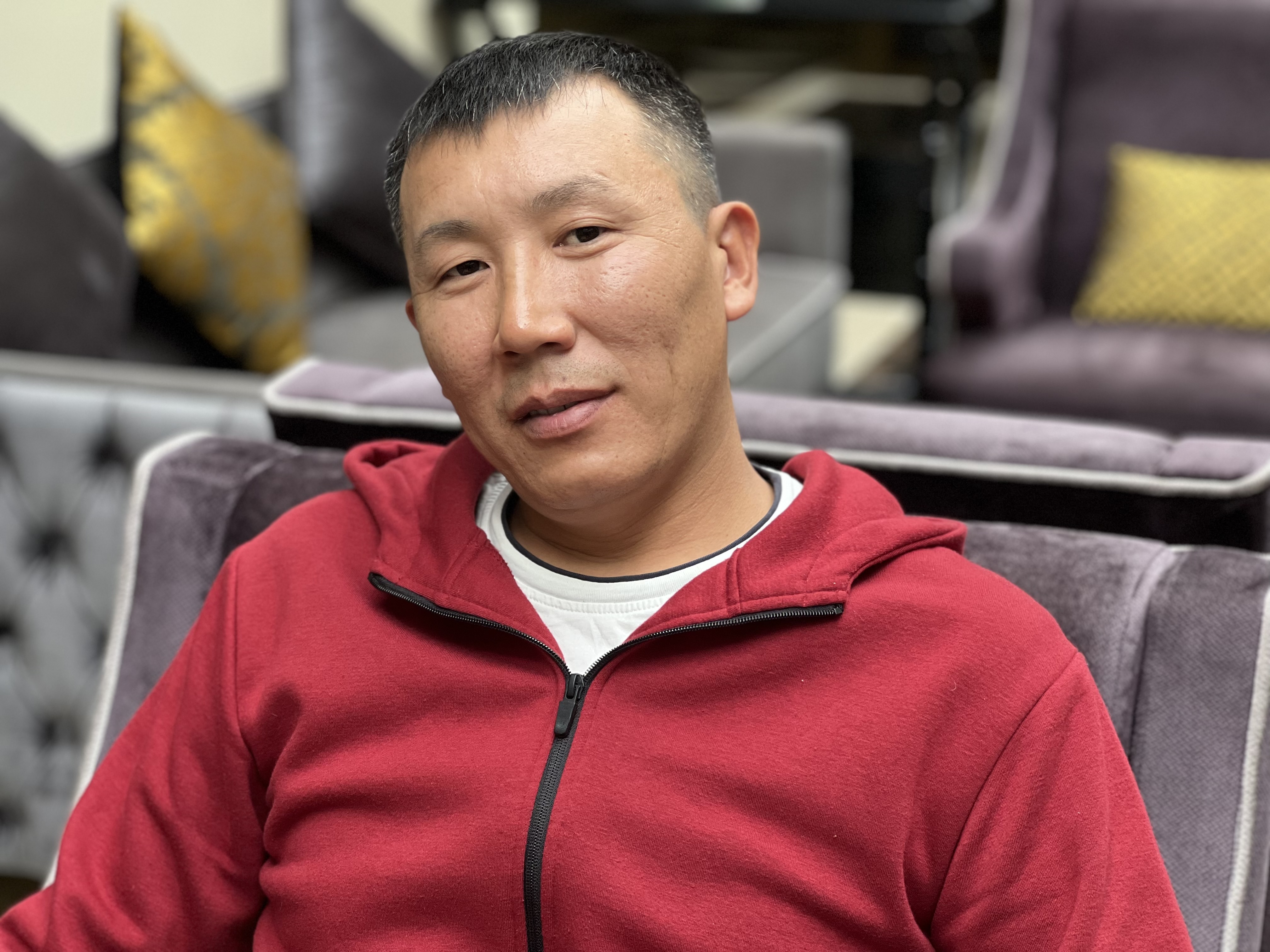
Daryn Nursapar was chief editor at Altaynews.kz, a state media outlet, when violence broke out in early January 2022. Photo credit: Cheryl L. Reed.
Although Daryn had donned his press jacket when he initially arrived to report on the protest on January 5, protesters become aggressive toward him and he covered it with his regular coat.
When the police took Daryn to the station two days later, he put his press jacket on. He hoped he could explain, with the jacket reinforcing his position as a journalist, and they’d let him go.
“Wearing the press jacket was a mistake,” Daryn said. “Knowing what I know now, I would still go to the protest, but I would wear a mask and be more secretive about my presence.”
At the police station, officers more thoroughly examined Daryn’s photos and searched through his messenger apps to see if he had tried to attract people to the protest, which he said he hadn’t.
“The police threatened me, ‘You were the organizer of the riots. You are going to be sentenced to prison for a long time.’ ”
Daryn, charged with being a participant in an unauthorized protest, was sentenced to 15 days. The sentence was later reduced to 10 days. He served his time in Ayagoz, about 190 miles away, with four other people who went to the protest in Ust-Kamenogorsk.
While in jail he thought about what he’d done. “I felt I had fulfilled a duty. I did the right thing.”
When he returned home, he learned his oldest child, a 10-year-old boy, was confronted by another boy who told him “your father is a terrorist and is in prison.” Daryn’s wife had told the kids their father was on a business trip.
“I explained to my son that what I was doing was not a crime. I was doing journalism.”
By January 9, Alexandra had heard of Daryn’s arrest as well as other accounts of people being tortured during interrogations. She said she sensed police were coming for her, too. She dropped her kids off at her mom’s house and erased photos that she felt might be construed as incriminating from her phone.
At 6 p.m., a policeman wearing civilian clothes and a military man wearing a balaclava appeared at her door. With Alexandra wearing only her pajamas — sweatpants and a hoodie — they drove her to what looked like a military base, where she was handed off to four uniformed police officers. The policeman in civilian clothes departed. The military man stayed.
Alexandra was then escorted into what she described as a Soviet-style children’s classroom with old wooden desks. She asked for an attorney, but they told her under the nationwide state of emergency, which President Kassym-Jomart Tokayev had declared on January 5, they didn’t have to provide her access to one.
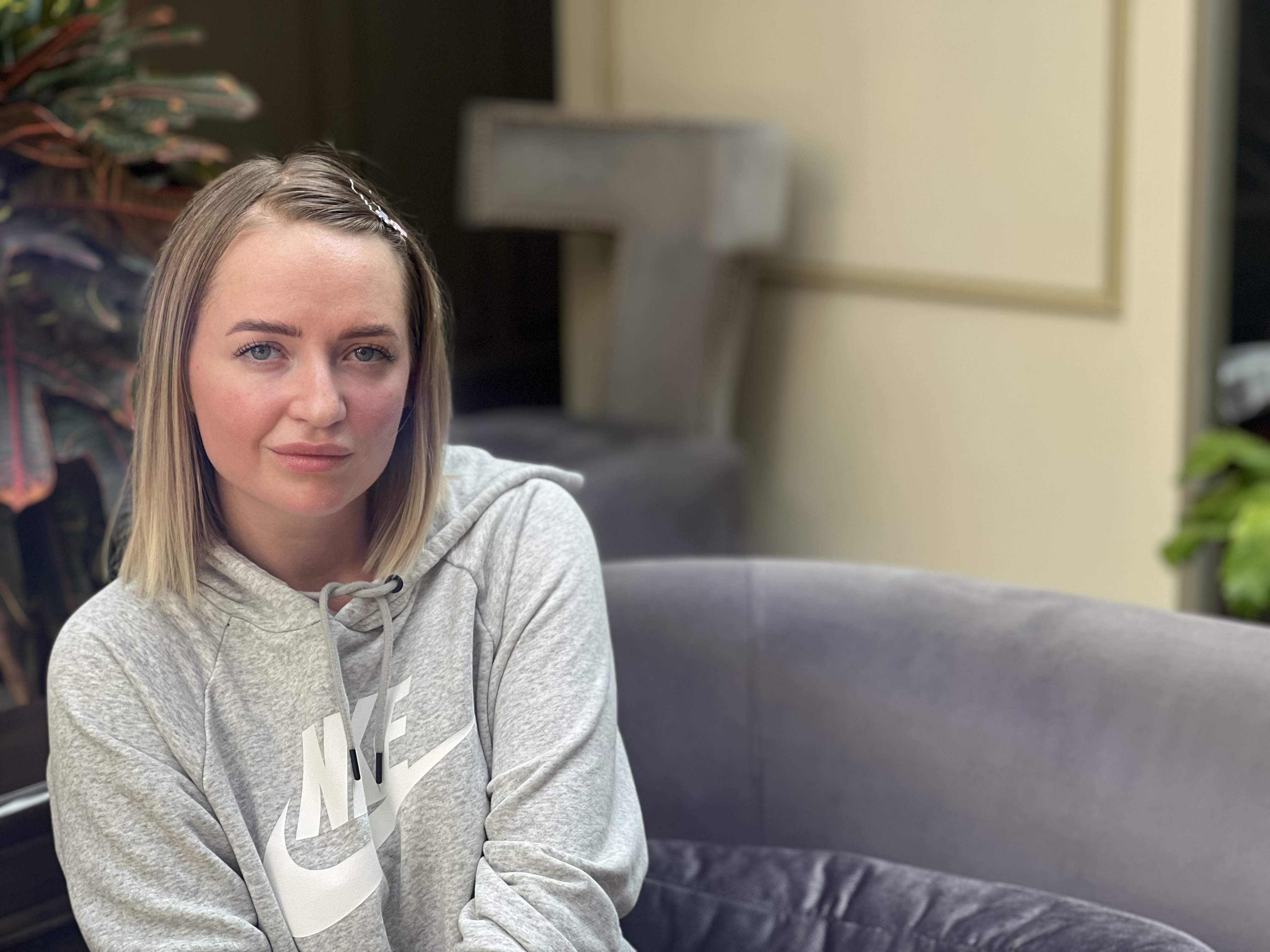
Alexandra Osipova, 30, is an independent blogger. Photo credit: Cheryl L. Reed
Each of the five men took turns interrogating her. They showed her surveillance footage of the protest and asked her to identify herself.
“The military guy started shouting and cursing and calling me a terrorist. He was blaming me for his colleagues being injured.”
Frightened, she said she stared at a wall rather than face her interrogators. The men didn’t like that. In response, the men stood in a circle around her as she remained seated in a chair. Their belts were level with her face. “It was humiliating,” she said. “It was a technique of psychological pressure.”
She asked them: “Are you going to beat me?”
The military man replied: “We wouldn’t dirty our hands with you.”
A law enforcement friend arrived and advised her to agree to an administrative fine. She did, thinking it would be the equivalent of a parking ticket. The police immediately relaxed and their harsh tone softened. They even let her nap while they waited for a judge. When the judge appeared around 11 p.m., they arranged the children’s desks into a makeshift courtroom, with a secretary taking notes near the judge.
The police claimed that in a livestreamed video Alexandra had encouraged people to come to the square. She said there was no such video on her Instagram feed, which she could prove it if they would provide access to her phone and if the internet wasn’t turned off. Police insisted that several times they told her to stop filming. If that were the case, she argued, that exchange would be on film, and it wasn’t.
She was charged with organizing an illegal protest. She would have spent 15 days in jail, but the judge took pity on her because she has two small children. She was fined 153,150 tenge, about $322.
When the internet was restored after six days of blackout, people flooded their social media accounts with photos and videos of police beatings and of relatives who disappeared into police custody.
“When I found out what was going on throughout the country, I realized how lucky I was, thanks to being a woman and a public figure. It could have been so much worse for me,” she said.
Three days after Alexandra’s release, police announced that three people had been killed “as a result of the riots” in Ust-Kamenogorsk. Police didn’t provide any further details. An Azattyq journalist, however, found the families of the three men who had been killed in the city and told their stories.
Kuanysh Kabylkanov, 25, a worker at a titanium and magnesium plant, died from a single gunshot to the chest. He was married with a 1-year-old daughter. Zholzharykh Yesenzholuly, 26, worked in a bakery in a nearby village, was also shot in in chest. He was married with an infant child. Aidos Aldashov, 30, had been at the rally for less than an hour when he was shot in the back. He left behind a wife and two children, ages 7 and 10.
National Day of Mourning
On January 10, Tokayev asked the nation to grieve for victims of the protest. He called the protest a coup d’etat attempt and blamed Islamic radicals from Afghanistan and the Middle East.
Nurzhan Baimuldin, 51, editor of the Kokshetau-Asia News Agency, was home when the country observed the National Day of Mourning. He was watching a television broadcast of Tokayev in a meeting with the countries of the Collective Security Treaty Organization (CSTO), the NATO-like organization that had sent peacekeeping troops to Kazakhstan to help curb the unrest. Around 2,500 CSTO troops — mostly Russian — deployed to Kazakhstan after a January 5 request from Tokayev for assistance. They guarded government buildings and infrastructure, fired no bullets, and left within two weeks.
Nurzhan believed Tokayev showed unusual deference to Russian President Vladimir Putin and asked on Facebook if Tokayev took orders from Putin. In post after post Nurzhan demanded to know who was really running his country.
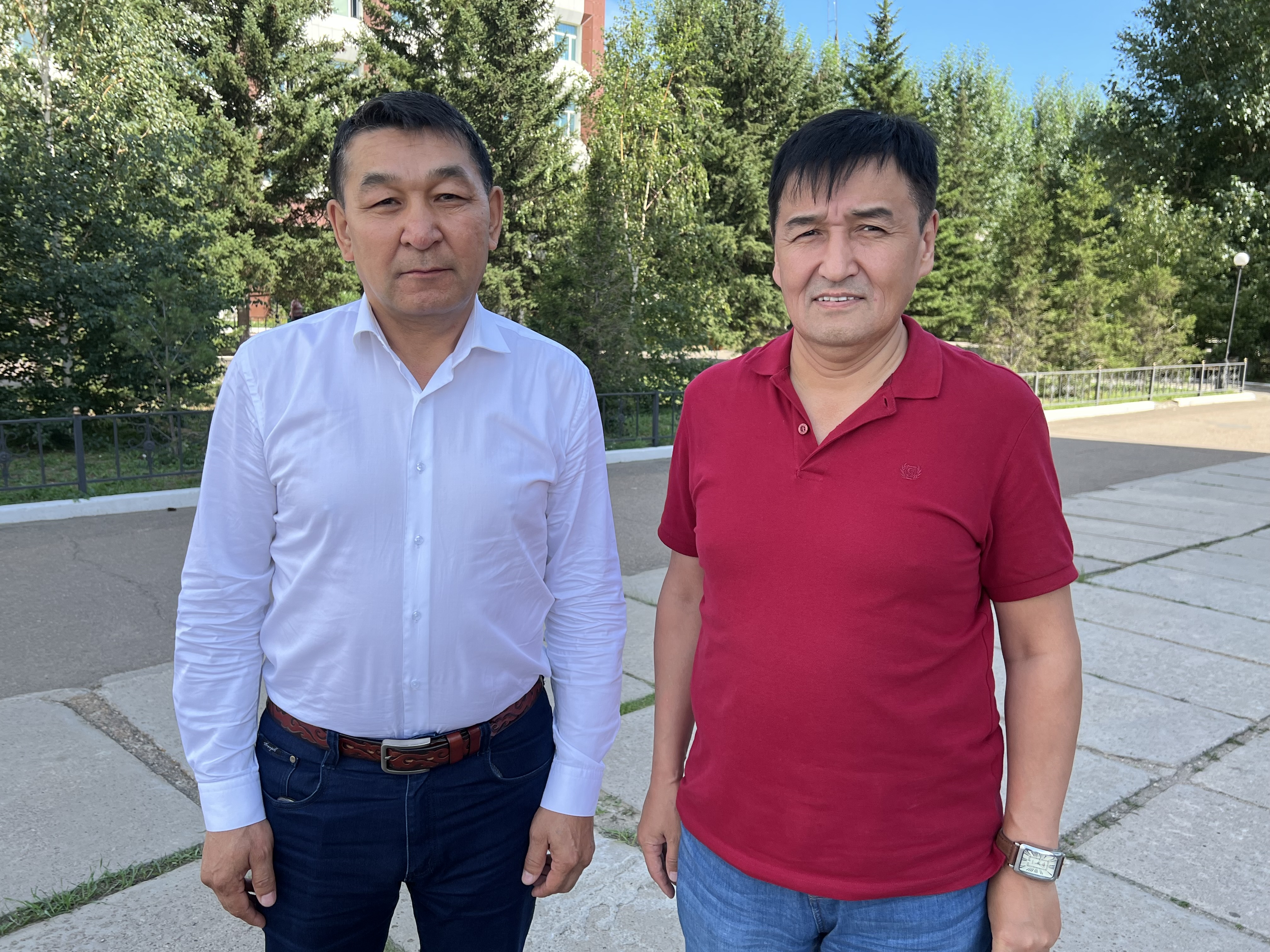
Baqyt Smagul, 57, the editor of the local independent paper, Bukpa, stands with Nurzhan Baimuldin, 51, editor of the Kokshetau-Asia News Agency. Photo credit: Cheryl L. Reed
On January 12, Nurzhan received a phone call from a person who presented himself as a high-ranking police officer. The man said he needed to meet with Nurzhan because the police department needed his advice. Nurzhan said he was surprised by the call. At the same time, he understood something was wrong.
By now, Nurzhan had learned about Baqyt’s arrest, and he knew he could be in danger as well. The whole country was shut down. The internet had returned but was spotty still. There was nothing else for Nurzhan to do but go and see what the police wanted. When he arrived at the police department, though, he had a bad feeling. Almost immediately police started to pressure him about his Facebook posts.
“They kept asking me why I wrote such bad questions to Tokayev and why I asked questions about the Russian troops coming to Kazakhstan, and why I asked questions about Putin.” They showed him printouts of his Facebook posts.
“It is my constitutional right to express my opinion,” he said he told them. “They wanted me to confess that I was organizing protests even though these posts were made after the protests were over.”
He was taken to the office of the police investigator and informed that police had opened a criminal case against him based on his Facebook posts. “They said that I was involved in the process of creating destabilization in the community. I was calling people together for the protests. I was saying offensive things about the president.”
Realizing he was being accused of serious allegations, he used his right not to answer questions and demanded an attorney.
Police suggested he use their attorney, and he laughed.
Nurzhan’s attorney was tied up with another case and he had to wait several hours. When she arrived, Nurzhan’s attorney requested that they move the hearing to another day because Nurzhan had a high body temperature and there was a chance he was infected with COVID-19.
Police called for an ambulance and a paramedic gave him medicine to lower his fever, but they refused to delay the hearing.
At 9 p.m. Nurzhan was brought before a judge. The judge sentenced him to 10 days of detention. But unlike Baqyt, who’d been able to serve his time at an administrative detention center, Nurzhan was taken to a criminal prison.
The prisoners there were held for all sorts of serious convictions, from pedophilia to assault and murder. Nurzhan said he shared a cell with a man who broke his wife’s arm, a man who hit a woman and her kids with his car, and another who had attacked his neighbor.
“There was one toilet in the room, which was being used by six prisoners,” he said. “The water was rusty and smelled foul. The cell was so cold. There was snow and ice on the blankets from a window. I realized I had to support myself morally because nobody is going to rescue me.”
What he didn’t know was that his colleagues had appealed to the general prosecutor and asked why a person would be imprisoned for asking questions of the president.
On the fifth day of his sentence, Nurzhan was called from his cell and told to bring all his clothes with him. He was brought to the prosecutor’s office at the prison. The prosecutor told him he was sorry for the case and the way it was handled. The prosecutor was accepting an appeal to Nurzhan’s case that would reduce his sentence to five days. He was released.
Nurzhan and Baqyt both appealed their cases to the regional court, which declined to hear them. Nurzhan then appealed to the Supreme Court of Kazakhstan, but it also refused to hear his case.
Alexandra appealed her fine. It was reduced to 90,000 tenge, about $185. She paid it.
Four days before our interview, Daryn quit his job at Altaynews.kz. He is now working in the tourist industry, but still posts on Facebook.
***
Continue reading as we follow the story of Kazakhstan’s Bloody January to Taraz and Shymkent.

































